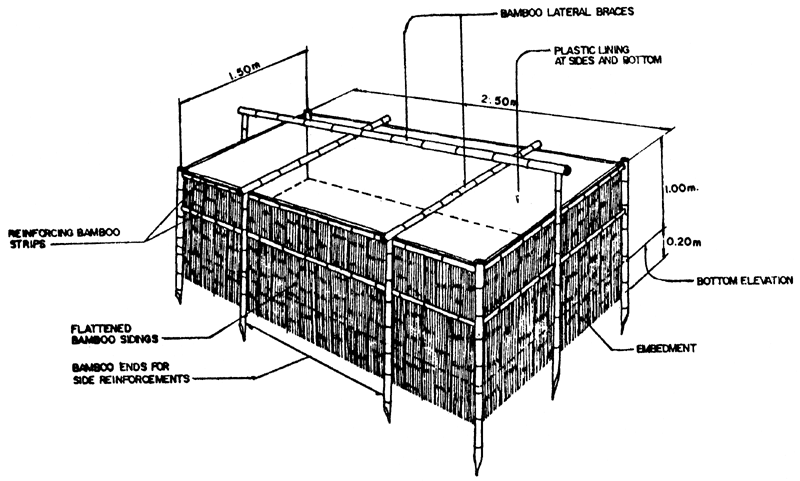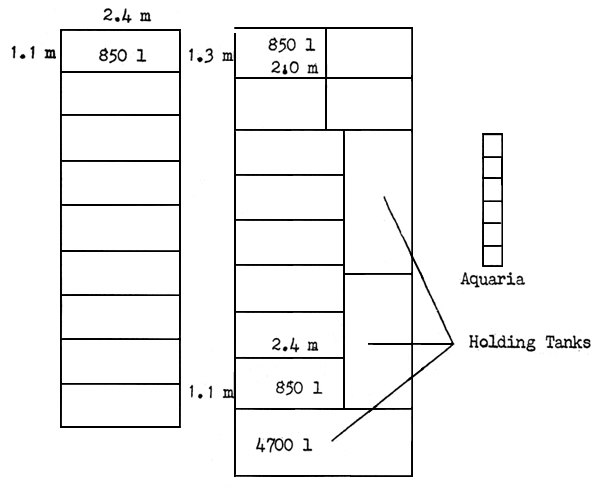In 1984, the Philippines became the largest producer of farmed shrimps in Asia. This was a consequence of the rapid shift from milk-fish culture to shrimp particularly in the Visayas and Mindanao regions. Milkfish production is more concentrated in Laguna de Bay near Manila and the nearby provinces of Bulacan, Pampanga and Pangasinan. Southern Luzon provinces such as Mindoro, Quezon and the Bicol region are also producing milkfish but more operators are likewise shifting to shrimp culture.
The technological breakthrough attained in the hatchery production of shrimp has already gone down to private sector undertaking with varying degrees of sophistication. There are now more than 60 shrimp hatcheries in the country (Country File, ASEAN/UNDP/FAO Regional Small-Scale Coastal Fisheries Development Project Library, 1983).
One of the main problems of the shrimp hatcheries is the availability of broodstocks. Maturation of shrimps under controlled conditions needs further research to make it economical. Hatchery operators apparently still find that procurement of wild mature shrimps is much better than rearing shrimps to maturity under pond conditions. Not only is this found to be time consuming but the element of uncertainty of producing mature shrimps is a big setback to hatchery operations. Furthermore, some pond operators claim that shrimp fry produced from ablated female broodstock has poor viability. For this reason, some hatcheries use wild caught broodstocks.
For small-scale income-generating activity related to shrimp culture, seeds rearing or the collection of spawners for disposal to hatchery opera-tors would be important links to further expansion of the shrimp culture industry. Simplification of hatchery facilities for shrimp fry production and rearing is another option. Other than permanent structures made of concrete, hatchery tanks could be made of wooden boards or bamboo frames lined with plastic sheets to hold water. Illustration of this kind of facility is shown in Figure 1.
Shrimp broodstock production appears to be the main link which would stabilize hatchery production of shrimp fry to supply the demand of shrimp farmers. Shrimp grounds are known in certain areas of the Philippines. Small fishermen could be taught the technique of live shrimp transport and handling so that he himself could engage in broodstocks rearing and storage. For this purpose, holding facilities such as cages may be used; land-based holding tanks made of circular culvert pipes may be used for small-scale operations. Demonstration of techniques regarding these aspects is necessary to refine the methods and ascertain economic viability for small-scale operations.


Figure 1. Set-up of small-scale spawning/hatching/nursery tank for marine shrimp1
1 From Aquaculture Extension Manual Series No, 9, SEAFDEC/AQD,
The rearing of shrimps from juvenile to marketable size is already an established aquaculture operation. The bottleneck is in the supply of quality shrimp fry. Hence, availability of broodstocks for hatchery use needs adequate attention. Hatchery operations have become a very attractive investment in the last decade in view of the expansion of shrimp culture operations. Most countries in Asia are developing this particular aquaculture sector in view of the foreign exchange earnings that the shrimps market provide.
Besides the marine shrimp, (Penaeus monodon) culture, freshwater prawn, (Macrobrachium rosenbergii) culture is widely practiced in Thailand. The technology of spawning this prawn had gone down to farm level that hatchery operations for the production of prawn juveniles are commonly practiced in backyard scale.
A small-scale prawn hatchery may be constructed in a space of 1 000–3 000 sq m of land area with good ground water supply. Facilities are constructed out of concrete cylindrical pipes or made of concrete hollow blocks for rectangular tanks. A typical small-scale prawn hatchery layout is shown in Figures 2 and 3 (Cloke and Potaros, 1975). With these facilities each hatchery produced 300 000 to 315 000 prawn juveniles/year during the initial operations. Maximum production is estimated at about 500 000–600 000 prawn juveniles with more experience in the art and business.

Figure 2. Typical small-scale Macrobrach ium hatchery (From Cloke and Potaros, 1975)
(Not to scale - sizes and volumes are approximate)

Figure 3.
There are 31 backyard prawn hatcheries in Thailand with a total estimate production of 40 000 juveniles per month (Table 11).
Table 11. Estimated output of post-larval Macrobrachium rosenbergii from hatcheries in Thailand, 19801
| Hatchery | Production | |||
| Current | Future | |||
| Monthly | Number of hatcheries | Total annual production potential (million) | Full annual potential (million) | |
| Commercial hatchery 'D' | 1.000 000 | 1 | 12.0 | 18.0 |
| Chacheongsao Fisheries Station | 1 000 000 | 1 | 12.0 | 20.0 |
| Commercial hatchery 'A' | 800 000 | 1 | 9.6 | 30.0 |
| Commercial hatcheries 'B' and 'F' | 600 000 | 2 | 14.4 | 17.2 |
| Commercial hatcheries 'C' and 'E' | 500 000 | 2 | 12.0 | 12.0 |
| Commercial hatchery 'I' | 300 000 | 1 | 3.6 | 3.6 |
| Commercial hatcheries V, 'H' and 'J' | 200 000 | 3 | 7.2 | 7.2 |
| 'ADB' hatchery, Songkhlaa | - | 1 | - | 20.0 |
| Songkhla Fisheries Station | - | 1 | 0.1 | - |
| 'Back-yard' hatcheries | 40 000 | 31 | 14.9 | 15.0 |
| Totals | 44 | 85.8 | 143.0 | |
In a case study on the technology and economics of small-scale prawn hatchery operations in Thailand, it was found that the ratio of net income to gross income was 37–60 percent; the ratio of net income to total operating cost including depreciation was 61 to 164 percent; and the ratio of net return to capital was 41 percent to 103 percent.
All ASEAN countries are expanding their shrimp farming operations. There are instances in the Philippines where excess of shrimp fry occurs due to overproduction. In some instances, the supply is scarce due to large mortalities in hatcheries. This is a problem that still need solution. Some hatcheries are very successful while others are not. There is a need for government research institutions to isolate the causes of failures and determine the factors of success in others.